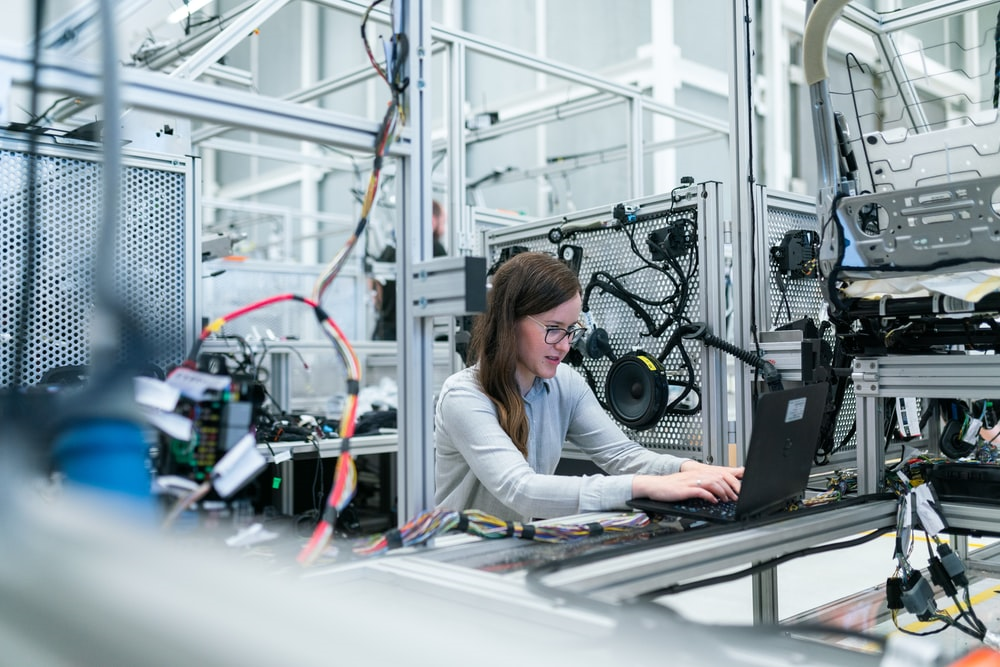
Product testing is a crucial component of development. Companies want to ensure high quality items that last. However, as technology advances, so do the ways researchers test goods. Tap into the power of machines for benefits such as scaled tests, higher accuracy and more reliable measurements.
Here are seven innovative ways technology can revolutionize a business’ product testing process.
1. Augmented Reality (AR)
Statista reports the augmented and virtual reality (VR) markets will reach $38.6 billion in 2024. Continued growth of 10.77% annually means AR and VR will hit $58.1 billion by 2028. AR allows companies to test the product in different settings and see how it performs in a person’s home or outside environment.
AR can also allow consumers to test a product before buying, such as in a store setting. The try before you buy model can be costly if involving a physical product. However, with the help of AR, users can see how something functions for them without destroying the original.
2. Virtual Prototyping
Virtual prototyping is another form of product testing that saves time and money. Before making a physical prototype, companies can test it out in a computer environment, tapping into the power of computer aided design (CAD).
CAD allows brands to fix any potential problems before creating the concrete item. Some tweaks may still be needed but testing virtually reduces the issues, saving time and prototype production costs.
3. New Lighting Techniques
Intricate electronics require populated circuit boards (PCBs). The problem with inspecting PCBs is that the elements are tiny and crammed into a small space. Having the appropriate lighting reduces the number of faulty components and improves overall PCB quality.
Better lighting is helpful in nearly any type of inspection during production. Companies can use different colors for lighting to highlight something like copper or steel components. They can also diffuse light, create a spotlight or turn to dome lighting solutions for a more expanded range of illumination.
4. Identifying Patterns
One way to find problems in software production is by looking for patterns and identifying anything that seems out of place. Today’s computers can sift through tons of data at once and figure out what doesn’t fit.
While manufacturers still need a human component to decipher computer reports, companies save time by having the report written for them. Inspectors will eliminate human error that might miss an anomaly in the patterns.
With computer programs, facilities can also shift between different products, inputting the new one so the machine knows what to look for and if it is different from the previous line production. Many manufacturing facilities produce multiple types of goods, so the fast pivots computers make can benefit everyone.
5. Artificial Intelligence (AI)
A powerful ability of AI is positive reinforcement learning–teaching computers what one wants them to do. A brand can start by running a product through tests and having the computer monitor it. A person gives a positive or negative response based on whether the machine got it right or wrong. Over time, the computer learns what’s preferred and automatically completes tasks.
One example might be taking a product and testing it to failure. Teaching the machine to identify weak points takes a little time, but once the program learns what to look for, AI takes over and finds any issues in products so the manufacturer can fix them before they hit the market.
AI can also test across different scenarios, improving test quality. Testing is faster with machines, allowing manufacturers to look at more products in less time.
6. Blockchain Tracing
Although not a direct test, blockchain tracing is a crucial component of ensuring quality. Blockchain technology improves supply chains. For example, parts get traced based on QR codes within unalterable ledgers. Should a recall be necessary, the manufacturer knows immediately which batch of products have the bad part and where they went.
Blockchain traceability also helps prevent counterfeit items from being passed off as authentic to consumers. Probably one of the most beneficial uses of new blockchain technologies is the ability to trace food sources and keep products safe for consumption.
For those who’ve visited a small chain grocery–there are only a few left in most areas–they’ve likely noticed outdated food and recalled items still on store shelves. When companies use blockchain tracing, it’s almost impossible to cheat the system. Companies that leave unsafe foods on the shelf risk losing their resell rights and may be subject to fines if intentionally doing so.
Blockchain is for more than just food. It’s a system that speeds up shipping, improves tracking and watches quality for nearly any type of product.
7. 3D Printing
The 3D printing market will reach $24 billion in 2024 and should see a 21.2% annual growth rate through 2033. Rather than spending a small fortune having a manufacturing facility create prototypes, companies can print their own for testing purposes.
Many testing methods destroy the original product. Fortunately, those with a 3D printer can create as many prototypes as needed to find flaws and weaknesses. Since the machines create one item at a time, one can make slight adjustments as they note problem areas and see if it fixes the issue.
3D printers can also create samples for stores considering carrying a product but wishing to test it fully first.
Better Product Testing Methods
The technologies of today are making product testing easier on companies. Computers and 3D printers reduce the costs, so even smaller brands can ensure quality and value. Although the rapid advances in AI and machine learning are exciting, where technology goes next may be even more interesting. From robots that do the testing to more advanced programs that learn automatically, the future of manufacturing will be unlike anything we can imagine today.
Eleanor Hecks is the managing editor at Designerly. She’s also a mobile app designer with a focus on UI. Connect with her about digital marketing, UX and/or tea on LinkedIn.